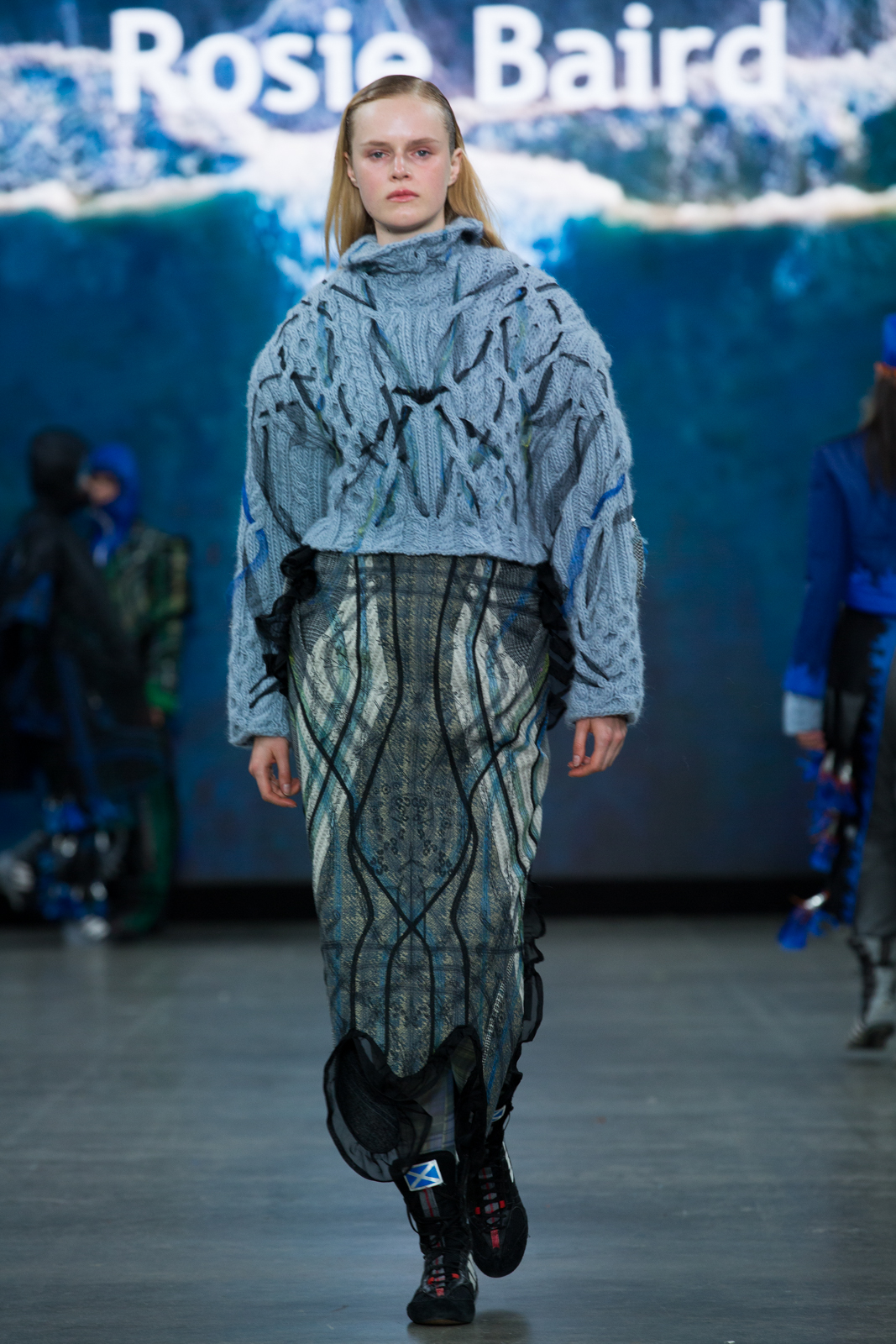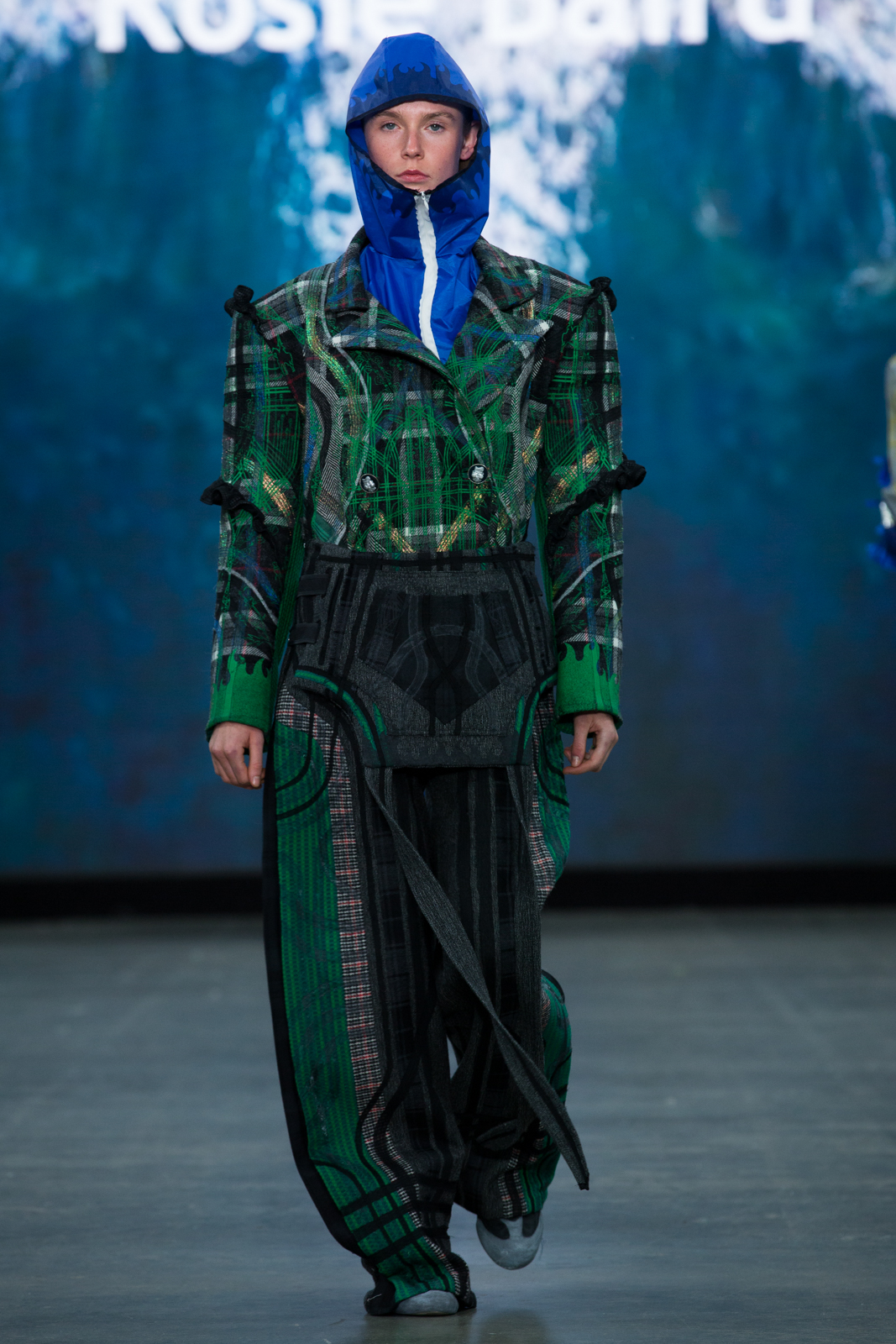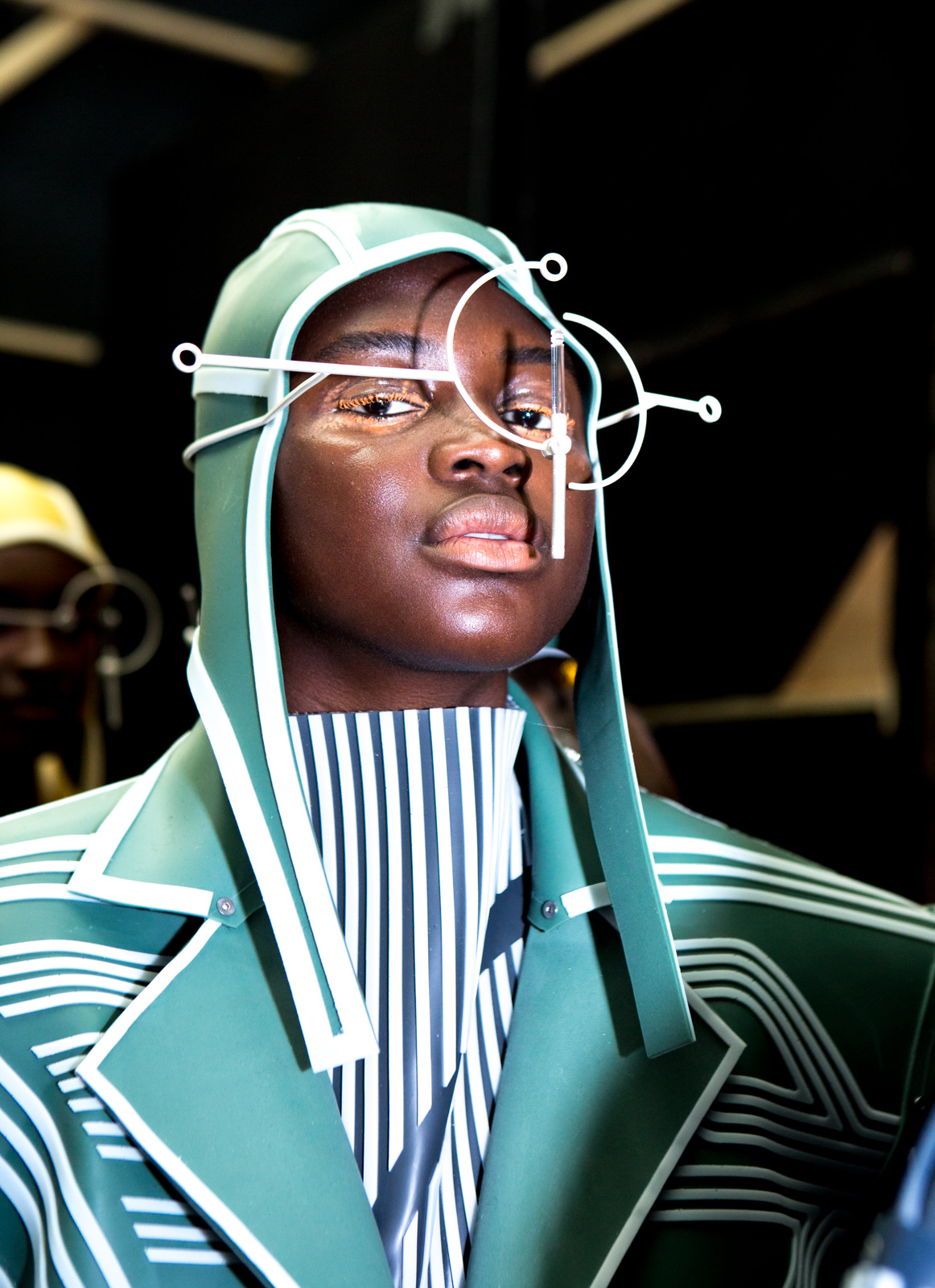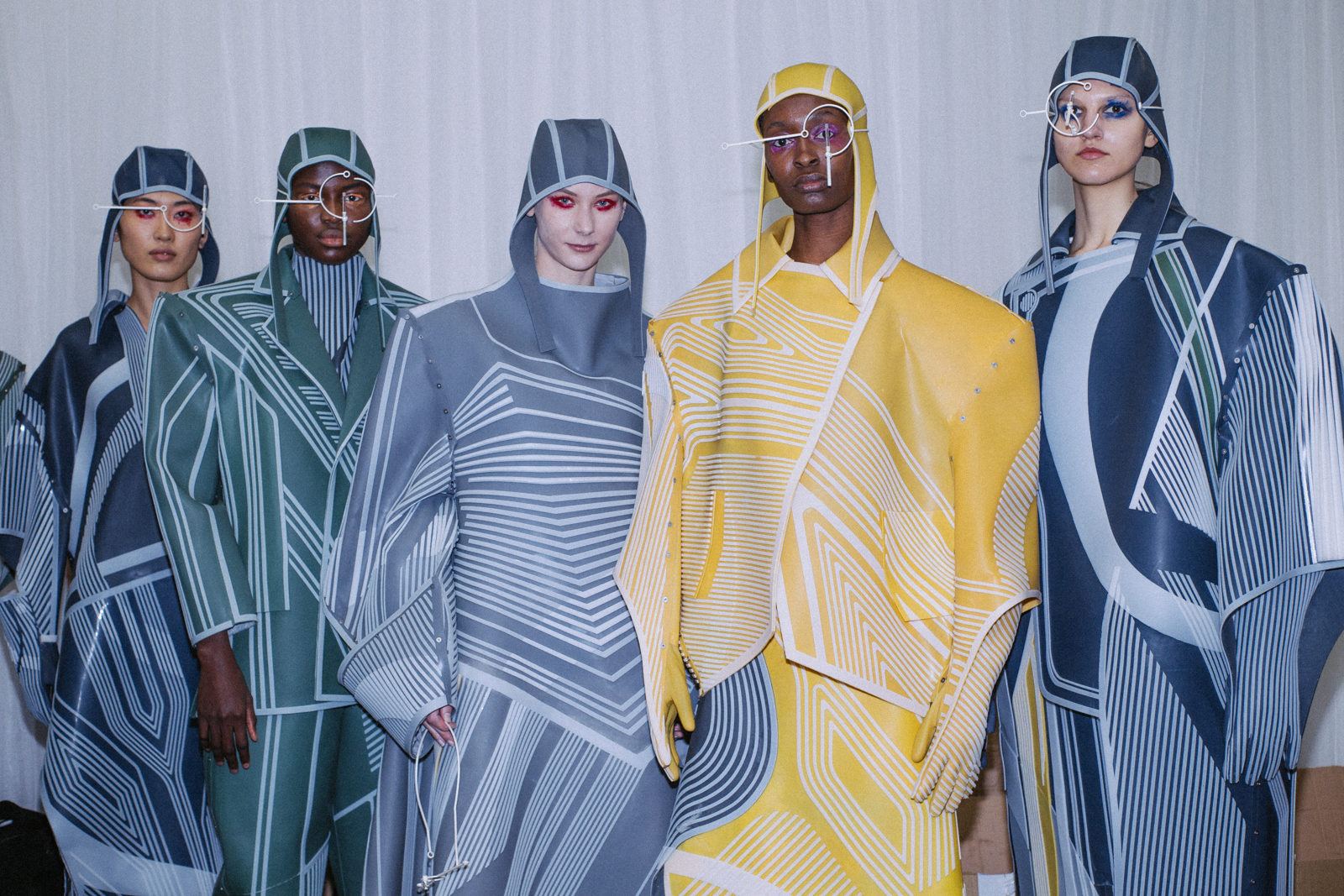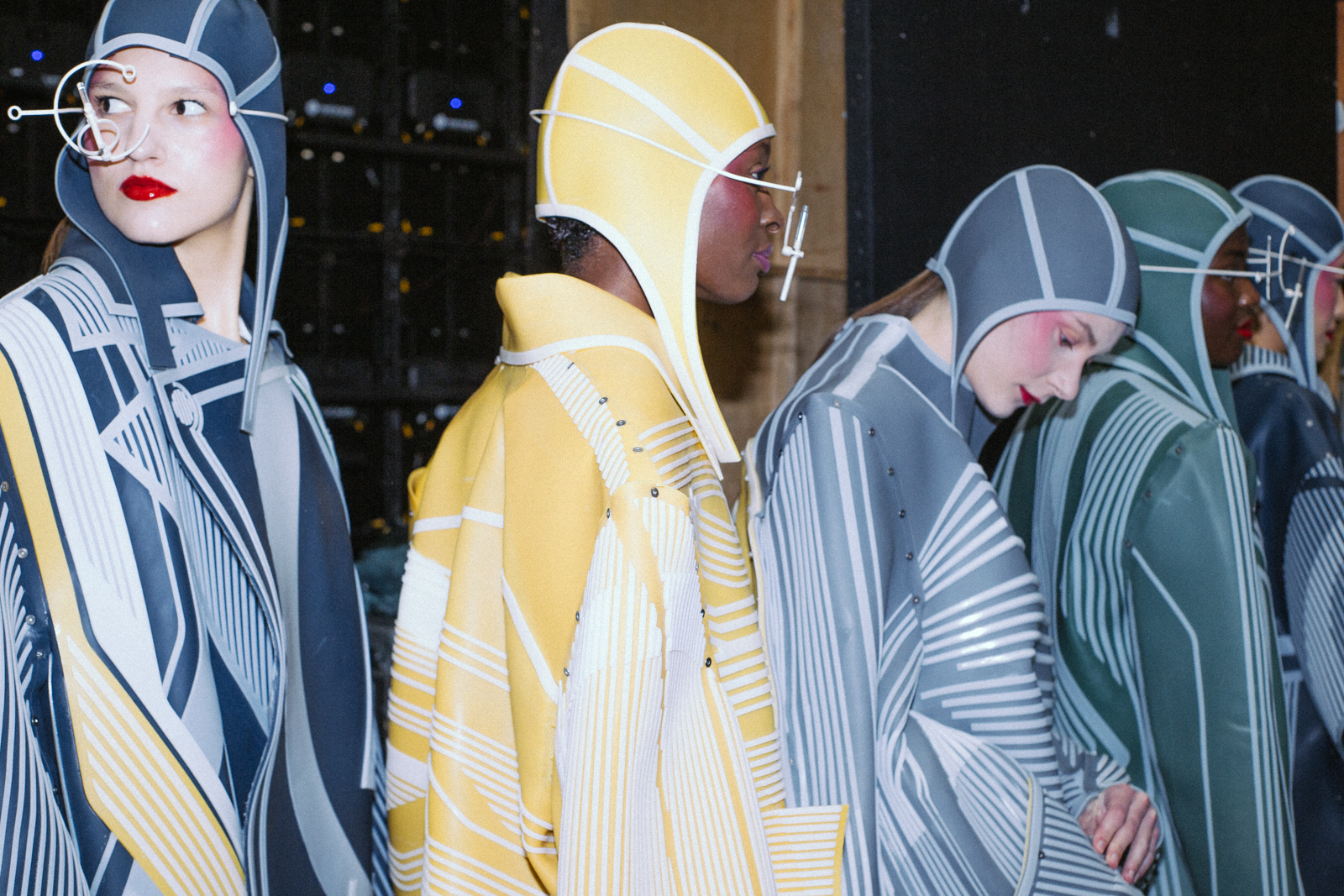There’s something in the water at the Edinburgh College of Art (ECA) — the largest and oldest art school in Scotland — which took out a host of awards at GFW19. Brian Mc Lysaght, the young designer whose final collection was created from sustainable fibres and wood, was applauded by judges from various categories for his creativity and ingenuity and subsequently took home three awards. Also from Edinburgh, Alexandra Fan won the Womenswear and David Band Textiles award, while Rosie Baird was given the George Catwalk to Store award at the GFW19 Gala show.
Following our recent announcement of the runners up for each award at GFW19, it’s impossible to ignore Edinburgh’s domination this year. So what is it that makes the school and its graduates so highly regarded? We spoke to Mal Burkinshaw, ECA’s Programme Director of Fashion at the School of Design, as well as judges who picked the winning graduates, to hear their thoughts on why Edinburgh’s students are so exciting.
Photo by Jade Berry
“Individuality is key to our vision,” explained Burkinshaw backstage at the GFW19 Gala, after three of his students had taken out five awards. “There’s not one way of teaching, so it’s a very tailored experience for each student. We know which ones to push and be hard on, and which to treat gently.”
Certainly, Rosie, Alexandra and Brian’s collections were aesthetically and conceptually unique. Rosie’s collection explored nostalgia and patriotism, deconstructing stereotypes of Scotland by creating her own tartan textiles. Alexandra’s collection was inspired by brutalist architecture, 20th century flight suits and female pilots. She moulded biodegradable silicone into futuristic tailoring which was modern and sculptural.
Brian, who won the Christopher Bailey Collection of the Year Award among two others, was inspired by his heritage to investigate ancient Irish culture, subsistence economies and early civilisations. “We try to nurture their own interests and not our own,” says Burkinshaw. “I never give students a research idea, it has to be theirs, but we do get them to push a singular idea to the maximum potential that they can.”
Of Brian’s collection, Toni Blaze — Editor in Chief of Wonderland magazine — was impressed by his personal connection to his work. “Because it was taken from his roots, and he dug deep in the overall theme he chose, the creativity and research shown throughout the collection gave a very cohesive overall effect.”
Several judges highlighted the importance of Graduate Fashion Week for students outside of London. "GFW isn’t London-centric and that is a very, very important thing,” said Orsola De Castro, founder of Fashion Revolution. “London tends to be ‘the world’ and the rest of the country tends to be where the jobs are done. It’s always really important to de-centrify and re-welcome what’s happening in other places.”
Indeed, Edinburgh’s isolation — almost 400 miles away from London — pushes the ECA students to go big to get noticed. “Making a statement is important for Edinburgh students,” says Burkinshaw. “We’re far away and therefore we need to stand out. The distance gives us the extra sense of competition and a need to say ‘Look at us!’”
A crucial consideration for the judges of this year’s awards was how students were engaging with sustainable design practices. “[Graduates] should be asking the questions that fashion needs to answer at the moment, and that is ‘how do we create beautiful things without destroying the planet in the process?’” said Anna Murphy, Fashion Director at the Times.
Photo by Nicholas Kristiansen
The three big winners from Edinburgh wove sustainability through the core of their final projects by creating innovative new materials. Using local, plant based materials was important to Brian. “I wanted to tackle the negative environmental impact of the fashion industry by using organic and biodegradable materials that won’t end up as pollution and will return the bio-nutrients to the earth,” he told GFW about his collection.
Rosie’s collection “adopted a two-pronged approach to [sustainability] through seeking to use locally produced, sustainable materials and collaborating with local artisans,” she told the John Byrne Award. Rosie also incorporated offcuts and end of roll fabrics which “combined this kind of classicism with a really contemporary feel,” according to Anna Murphy.
Alexandra’s silicone alternative to plastic — which is durable, heat resistant, recyclable and non-toxic — also impressed the judges, like IntheFrow’s Victoria McGrath. “As soon as we saw [Alexandra’s collection] we were all blown away,” she said. “Everything she did was very creative, very unique, and made from very innovative fabrics.”
Reflecting on the success of ECA at this year’s GFW, Burkinshaw said that the awards were just the icing on the cake. “We’re really emotional and a bit blown away by the success. We’re not driven by competition, but all of our students are worthy of success,” he said. “A platform like GFW gives our students an incredible step up as they head into this big scary world of fashion.”





